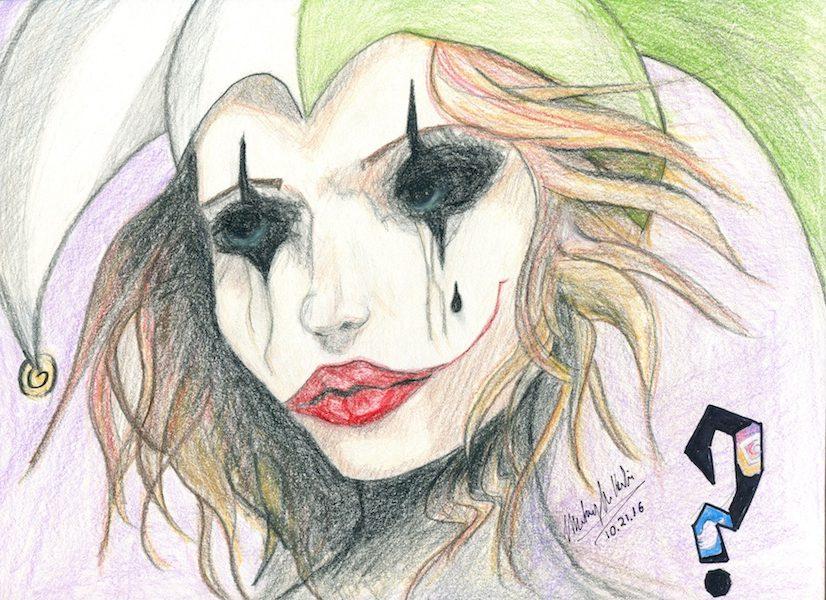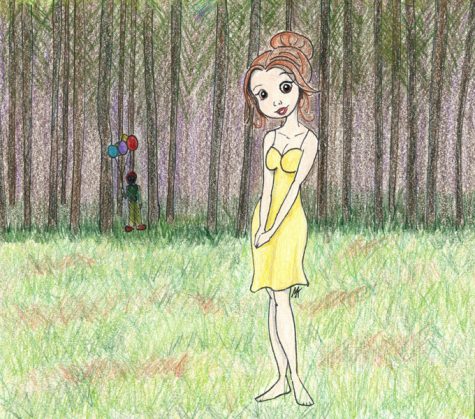Scared Silly: Is the Problem the Clowns or the Media?
October 24, 2016
Ever since author Stephen King illustrated the nightmarish character Pennywise in his book, It, society formulated an unpleasant and malicious connotation of clowns. And while “clown crazes” have swept the nation in the past, today a social-media-fed coulrophobia epidemic consumes young and old alike.
The fear exposed in It originates from the fact that clown’s mask their true identities, emotions, and intentions behind over-the-top accessories and face makeup. And that’s why these clown sightings are so terrifying–no one can distinguish between what is a prank and what is real.
The hysteria first began in August, when different accounts of South Carolina children being coaxed into the woods by clowns reached police departments and surfaced to the public. It’s terrifying to think that brothers, sisters, children, and neighbors could be living our worst nightmares.
Although, some may argue that over exaggeration by sensationalized media has mutilated the truth behind the allegations and fostered many hoaxes. However overblown with false claims and staged videos posted, the danger is still prevalent.
Many of the horrific accounts are indeed fake and does not pose any greater threat than a good, old-fashioned scare, at the worst causing a few terror-induced deaths and arrests for terrorist threats.
However, the overemphasis of mass hysteria by the media may cause people, especially the impressionable youth and mentally-unstable demographic, to act in irrational ways and influence them to actually do more than just scare.
It incites violence.
People are heavily-swayed by social media, and the bombardment of clown sighting threats across the globe on sites such as Twitter might coax those under the influence or struggling with mental illness to justify their reason to kill behind the anonymity of a clown costume.
Its popularity puts many citizens at more than one risk by making it cool to participate in “clown hunts” motivated by rage, fear, likes, or all of the above.
Pennsylvania State University’s “clown hunt” is the most currently-notorious, amassing over 500 student participants to go into the woods and search for the clown that had made a threat online to the campus. It turned violent, requiring several police squads to contain the outraged and animalistic teens.
Penn State police Sgt. Mike Nelson said to the Centre Daily Times, “‘The cause of this specifically was social media. If there were any clowns with this many students out there and with our police responding to calls, we would have ran into it.’”
Such outrage has also exhibited across many other college and high school campuses, where some districts have gone to the extent of locking down schools and banning clown halloween costumes after social media threats began targeting schools and neighborhoods.
Even major corporations addressed the pandemonium among their consumers, and companies like Target have removed clown accessories and costumes from their shelves. Ronald McDonald, mascot of McDonald’s Hamburgers, has even been placed out of advertisements at the moment.
The fact is: people are scared, and fear causes nothing but trouble, stress, and, most importantly, violence. And it’s all because of social media.
The fear exposed in It originates from the fact that clowns mask their true identities, emotions, and intentions behind over-the-top accessories and face makeup. And that’s why these clown sightings are so terrifying–no one can distinguish between what is a prank and what is real.
The clown situation is like a bully; it never stops until the victim refuses to cave into the bully’s tormenting any further. Once the media stops giving them attention and acknowledgement, the clowns will slowly disappear.
The craze must end; so next time a clown video pops up on twitter, try not to like it.



